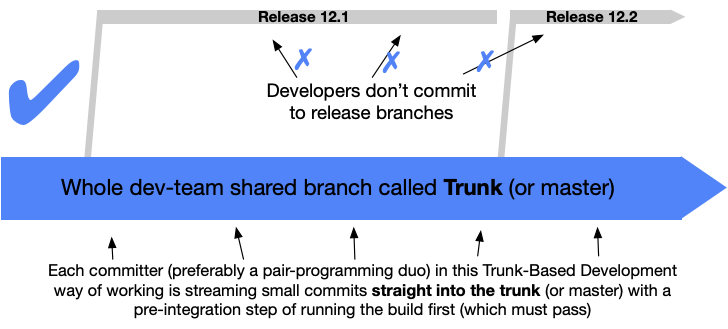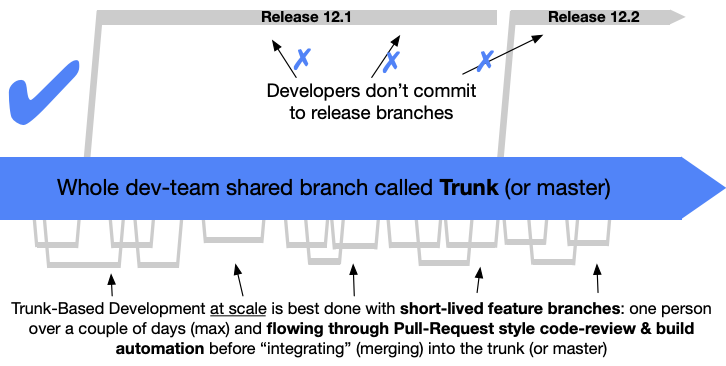I’ve heard it thrown around in professional circles and how everybody’s doing it wrong, so… who actually does use it?
For smaller teams

“scaled” trunk based development

I’ve heard it thrown around in professional circles and how everybody’s doing it wrong, so… who actually does use it?
For smaller teams

“scaled” trunk based development

I do, on a 900+ developer mono repo. Works like a charm.
We just have a CD that allows to deliver each project each micro service individually.
You deliver your software on CDs?
Most likely CD is intended to mean continuous delivery, which commonly means automation in processes that deliver your software to it’s target audience.
Out of curiosity, how long are CI and CD runs? And are there any particularities in the way of working for example every PR/MR is created by pair programmers, or the use of josh to cut down on time to clone, stuff like that.
Anti Commercial-AI license
If cloning a repo is an issue, you’re using CI wrong. --shallow has it’s purpose.
Anyway, in my project a complete CI run including local integration tests takes about an hour. We could cut that down by running things in parallel, but we never bothered to add more runners.
I would say, if your tests hold you back, you might want to reconsider testing. Staged testing is an option, or just reevaluate whether you really need all those test cases. Many integration tests are not really testing that much, because 95% of them overlap.